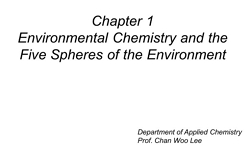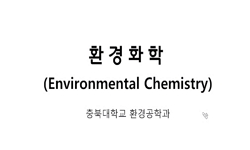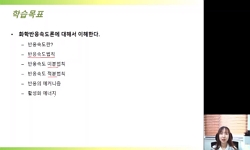This study attempted to examine the 7th science curriculum and the 2007 revised curriculum scheduled to be applied after 2009 and analyzed, especially, added and eliminated contents in the chemical field of 'science', a common basic curriculum account...
http://chineseinput.net/에서 pinyin(병음)방식으로 중국어를 변환할 수 있습니다.
변환된 중국어를 복사하여 사용하시면 됩니다.
- 中文 을 입력하시려면 zhongwen을 입력하시고 space를누르시면됩니다.
- 北京 을 입력하시려면 beijing을 입력하시고 space를 누르시면 됩니다.
제 7차 과학과 교육과정과 2007 개정교육과정의 ‘과학’의 화학영역 내용 비교ㆍ분석 = The Comparison and Analysis on the Chemical Field of ‘Science' in the 7th Science Curriculum and the 2007 Revised Curriculum
한글로보기https://www.riss.kr/link?id=T11990763
- 저자
-
발행사항
서울 : 국민대학교 교육대학원, 2010
-
학위논문사항
학위논문(석사) -- 국민대학교 교육대학원 , 교육학과 화학교육전공 , 2010. 2
-
발행연도
2010
-
작성언어
한국어
- 주제어
-
발행국(도시)
서울
-
형태사항
ⅴ, 80p. ; 26cm
-
일반주기명
지도교수 :박찬량
- 소장기관
-
0
상세조회 -
0
다운로드
부가정보
다국어 초록 (Multilingual Abstract)
This study attempted to examine the 7th science curriculum and the 2007 revised curriculum scheduled to be applied after 2009 and analyzed, especially, added and eliminated contents in the chemical field of 'science', a common basic curriculum accounting for 3rd grade students and 10th grade students and moved contents. In addition, it analyzed the rationalization of revised contents and suggested appropriate follow-up measures followed by revised curriculum. The results of comparing and analyzing the standard direction, the content system, and the details of the chemical field of 'science.
First, examining the 7th science curriculum and the basic characters of the revised curriculum, although they had a same direction, unlike the 7th curriculum that described comprehensively, the revised curriculum concretely described the links among the contents, the functions of study objects, learning methods, and learning conditions.
Second, while the 7th curriculum divided the content system into energy, substance, life, and the earth, the 7th revised curriculum divided the content system into motion and energy, substance, life, and the earth and the universe. Chemical fields were included into substance. The depth and complement courses from 6th grades to 10th grades in the 7th curriculum were eliminated, free research courses were newly added in the revised curriculum.
Third, examining the details, lots of contents such as 'melting powder substance' were eliminated in order to provide sufficient opportunities for fundamental research activities in the chapter of 'objects and substances' for the 3rd grade, 'understanding the characteristics of various liquids' and 'separating mixtures' were integrated in the 4th grade, and 'volume changes by heat' was eliminated. 'Creating crystal' in the 5th grade was eliminated and 'creating solution' and 'examining the characteristics of solution' were integrated into 'dissolution and solution.' 'Changes of solution' in the 6th grade was expanded and moved to the unit of 'acid and base' and the rest of contents in the 6th grade remained. The contents in the 7th grade remained, the contents in the 8th grade was moved to the 9th grade with a part of ' electrolyte and ion' in the 10th grade, 'construction of substance' in the 9th grade was moved to the 8th grade, and 'the regularity in the changes in substance' was moved to the 10th grade. 'reaction of acid and base' in the 10th grade was expanded and modified to 'various chemical reactions', and 'the speed of reaction' was eliminated.
Fourth, as a result of revising the 7th curriculum, the suitability of the contents of science curriculum was analyzed. As the low levels of contents in the 3rd grade were eliminated and the contents in the 4th grade were added by considering the connection of the contents, the connectability increased. As the low levels of contents in the 4th and 5th grades were eliminated, the contents that had the connectability were integrated, and duplicated contents were excluded, the connectability of detailed and repeated contents. Considering the knowledge of the 6th grade, contents were expanded and the proportion of practical contents related to daily lives increased. Although there was no change in the contents for the 7th grade, the connectability increased by arranging the order of units sequently. The contents moved forward in the 8th, 9th, and 10th grades were easily constructed to understand based on the level of comprehension and they were integrated and moved by considering the connection of the concepts to be suited for academic ranks.
The 7th revised curriculum constructed educational courses by trying to sublate the duplication of the contents and aim to integrate the contents and from the aspects, it rationalized the volume and levels of the contents by reducing units for each grade in elementary school's curriculum and integrating or eliminating duplicate contents from the 7th to 10th grades.
On the other hand, the revision of the curriculum was only a starting point of the serial processes for science education. With regard to the revision of the curriculum, the effectiveness increases and the results corresponding to the goals can be achieved when follow-up measures are prepared.
First, textbooks should be developed to support the curriculum. Second, training for teachers should be conducted to assimilate the changes in revised curriculum and practice in real situations.
Third, evaluation systems should be prepared to correspond to the curriculum. Fourth, the system should be established during the process of developing revised curriculum.
국문 초록 (Abstract)
본 연구는 7차 과학과 교육과정과 2009년부터 적용될 2007 개정교육과정에 대해 알아보고 특히 3학년부터 10학년에 해당하는 공통기본교육과정인 ‘과학’의 화학영역에서 추가된 내용과 삭제...
본 연구는 7차 과학과 교육과정과 2009년부터 적용될 2007 개정교육과정에 대해 알아보고 특히 3학년부터 10학년에 해당하는 공통기본교육과정인 ‘과학’의 화학영역에서 추가된 내용과 삭제된 내용, 이동된 내용에 대해 분석하였다. 또한 개정된 내용의 적정화에 대해 분석하고 교육과정 개정에 이어서 적절한 후속조치를 제시하였다. ‘과학’의 화학영역의 기본방향과 내용체계, 세부내용을 비교 분석한 결과는 다음과 같다.
첫째, 제 7차 과학교육과정과 개정교육과정의 기본 성격을 비교하면 기본방향은 같았지만, 포괄적으로 기술하던 7차 교육과정과는 달리 개정교육과정은 내용간의 연계, 탐구 대상과 기능, 학습 방법, 학습상황을 보다 구체적으로 진술하였다.
둘째, 7차 교육과정은 내용체계를 에너지, 물질, 생명, 지구 영역으로 분류하였고, 7차 개정교육과정은 내용체계를 운동과 에너지, 물질, 생명, 지구와 우주 영역으로 분류하였다. 이중 화학영역은 물질부분에 해당한다. 7차 교육과정의 6-10학년의 심화‧보충과정은 삭제되었고, 자유탐구과정이 개정교육과정에 신설되었다.
셋째, 세부내용을 비교해 보면, 3학년의 ‘물체와 물질’ 단원에서는 기초 탐구 활동 기회를 충분히 제공하기 위하여 ‘가루 물질 녹이기’ 등 많은 내용을 삭제하였고 4학년의 ‘여러 가지 액체의 성질 알아보기’와 ‘혼합물의 분리하기’를 이동해서 통합하였으며 ‘열에 의한 부피변화’는 삭제되었다. 5학년의 ‘결정 만들기’를 삭제하고, ‘용액 만들기’, ‘용액의 성질 알아보기’는 ‘용해와 용액’ 한 단원으로 통합하였다. ‘용액의 변화’는 6학년의 ‘산과 염기’단원으로 확대되어 이동하였고, 나머지 6학년의 내용은 유지 되었다. 7학년 내용은 현행 유지 되었으며, 8학년의 내용은 10학년의 ‘전해질과 이온’을 일부 포함해서 9학년으로 이동하였으며 기존의 9학년에 있던 내용은 ‘물질의 구성’은 8학년으로, ‘물질변화에서의 규칙성’은 10학년으로 이동하였다. 10학년의 ‘산과 염기의 반응’은 ‘여러 지 화학 반응’으로 확대 수정 되었고, ‘반응 속도’는 삭제되었다.
넷째, 7차 교육과정을 개정한 결과 과학교육과정의 내용의 적합성을 분석하였다.
3학년에서는 수준이 낮은 내용을 삭제하고 내용의 연계성을 고려하여 4학년 내용을 이동해옴으로써 연관성을 높였고, 4,5학년에서는 수준 낮은 내용은 삭제하고 연계성 있는 내용을 통합하여 이동하고 중복되는 내용은 포괄하여 구성함으로써 세분화되고 반복되던 내용의 통합성을 높였다. 6학년은 지식수준을 고려하여 내용을 확대하고 실생활과 관련된 내용의 비중을 늘렸고, 7학년은 내용은 변화 없었으나 흩어져 있던 단원의 순서를 연속적으로 배치하여 연계성을 높였다. 8,9,10학년은 개념 도입시기가 필요에 의해 앞 당겨진 내용은 인지 수준 고려해 쉽게 구성하였고, 개념 연계를 고려하여 통합, 이동함으로써 학문적 위계에 맞게 구성되었다.
7차 개정교육과정에서는 내용의 중복을 지양하고 통합을 지향하여 교육과정 내용을 구성하였고, 이러한 측면에서 초등학교 과정의 학년별 단원 수를 줄이고 7-10학년 과정에서 중복되는 내용을 통합하거나 삭제하여 내용량과 수준을 적정화 하였다.
한편 교육과정의 개정은 과학 교육을 위한 일련의 과정의 출발점에 불과하다. 교육과정 개정에 이어서 적절한 후속조치가 이루어질 때 효과가 증대되며 목적에 부합하는 결과를 얻을 수 있을 것이다.
첫째, 교육과정을 뒷받침할 수 있는 교과서가 개발되어야 한다.
둘째, 개정된 교육과정의 변화를 충분히 소화하고, 실제 현장에서 구현될 수 있도록 교사 연수가 이루어져야 한다.
셋째, 교육과정의 의도에 부응하는 평가 체제가 마련되어야 한다.
넷째, 교육과정 개정을 개발하는 과정에도 체제를 확립하여야 할 것이다.
목차 (Table of Contents)
- Ⅰ. 서론
- 1. 연구 목적 및 필요성............................................................1
- 2. 연구 내용.........................................................................3
- 3. 연구의 제한점....................................................................3
- Ⅰ. 서론
- 1. 연구 목적 및 필요성............................................................1
- 2. 연구 내용.........................................................................3
- 3. 연구의 제한점....................................................................3
- Ⅱ. 이론적 배경
- 1. 교육과정의 유형
- (1)교과중심 교육과정............................................................. 4
- (2)경험중심 교육과정............................................................. 6
- (3)학문중심 교육과정............................................................. 8
- (4)인간중심 교육과정............................................................ 11
- (5)구성주의 교육과정............................................................ 14
- 2. 우리나라 과학교육과정의 변천
- (1)교수요목기.................................................................17
- (2)제1차 교육과정............................................................... 18
- (3)제2차 교육과정............................................................... 20
- (4)제3차 교육과정............................................................... 23
- (5)제4차 교육과정............................................................... 26
- (6)제5차 교육과정............................................................... 28
- (7)제6차 교육과정............................................................... 31
- (8)제7차 교육과정............................................................... 34
- (9)7차개정교육과정............................................................ 43
- Ⅲ. 연구 결과
- 1. 국민 공통 교육 기본 과정의 ‘과학’의 기본 성격 비교................ 52
- 2. 3-10학년 화학영역 내용체계 비교....................................... 53
- 3. 3-10학년 화학영역 세부 내용의 비교ㆍ분석........................... 54
- 4. 국민 공통 기본 교육 과정의 ‘과학’의 교육 내용 적정화............. 70
- Ⅳ. 결론 및 논의................................................................ 74
- 참고문헌........................................................................... 77
- Summary.......................................................................... 78












